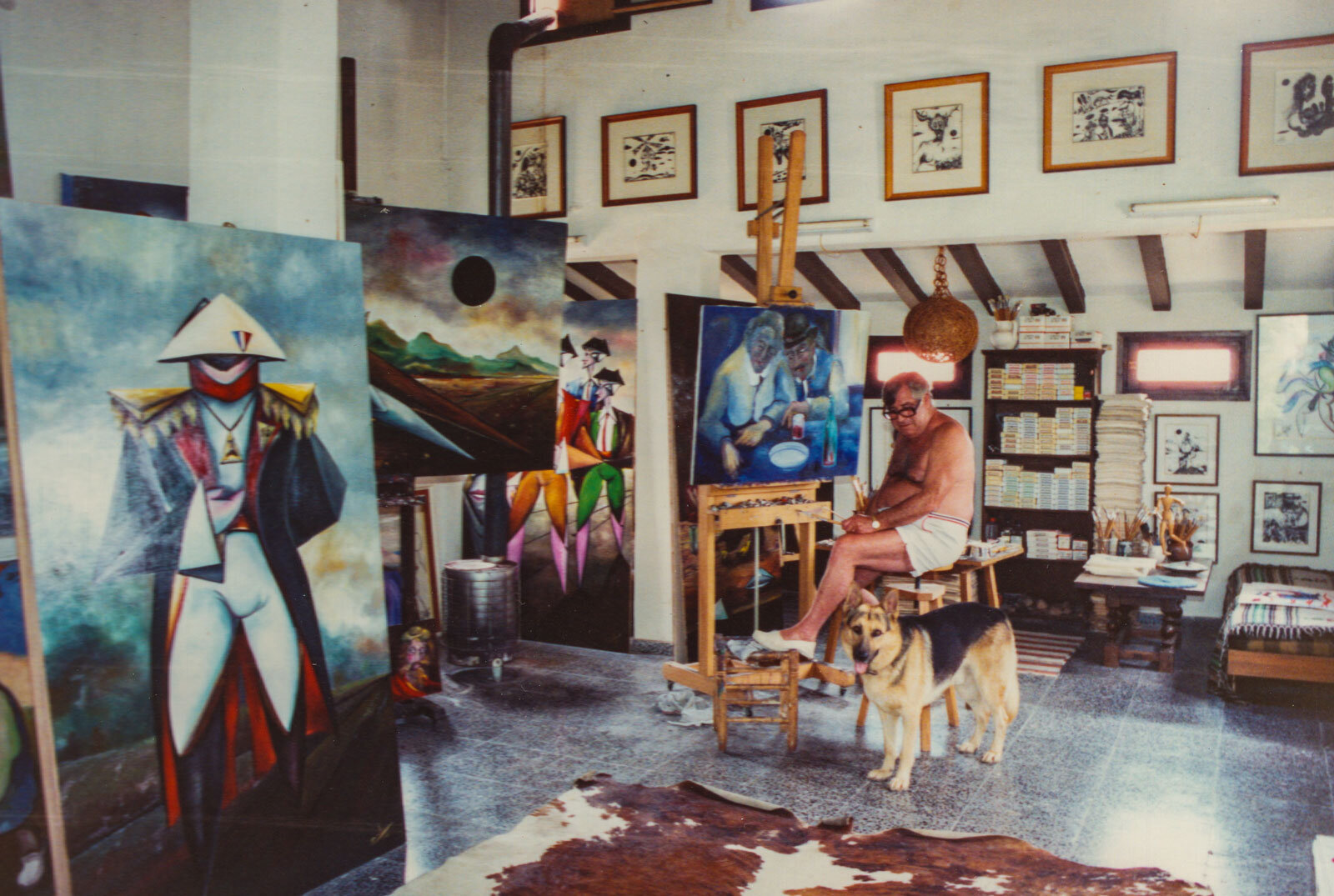
Pedro Delso Rupérez was born on August 28, 1924, in San Esteban de Gormaz, a small town in the province of Soria in northern Spain. His father was a schoolmaster, and his family had completely different plans for young Pedro than for him to become an artist. But the boy showed greater interest in the drawing pencil than the textbooks. As a four-year-old, he won a drawing competition, and at the age of 10 he skipped the school to join a group of artists who were to restore the paintings in the local chapel. Young Pedro's interest in the art and painting was noticed, and the county administration offered him a scholarship to study at the Bellas Artes Academy of Art in Madrid. His parents would not allow this, but after many discussions with the family, he was allowed to start at the School of Arts and Crafts in Soria, at the same time as he was going to study for a bachelor.
Pedro thrived at the School of Arts and Crafts, but he cared little about the other studies. He wanted to learn more about art, and at just 15 years old, he decided to escape from home, and went to Barcelona to try to become a student at the Royal Academy of Arts. Pedro became a student, and at the same time he managed to earn a living by using his drawing skills. After two years, he receives a scholarship to travel to Paris and study there. At the same time he holds exhibitions and is quickly noticed. In Paris he also meets Pablo Picasso.
The artist in his pottery workshop.
In the next few years, there will be more stays in Paris for Pedro. He also travels to Latin America and Africa to paint and get inspiration. He gets his own studio in Barcelona, and is also reunited with his family who have moved to the city. Pedro develops as an artist and learns to work with both ceramics and iron. Together with his brother, he opens a restaurant in Barcelona, which he decorates with imaginative art. He is also assigned to decorate several restaurants and hotels. Not only in Barcelona, but also in Paris.
Pedro Delso is considered the creator of triangulism, an art style related to cubism. Delso believed that most things in life could be described in triangles, such as the Holy Trinity, the three elements (earth-air-water) and life itself as a child, adult and old. The triangle is the perfect geometric shape, Pedro thought. The triangles are repeated in much of his art, not least in his works in ceramics and iron. Pedro Delso's artwork is spread throughout the world, but those who undoubtedly have the largest audience can be found in Barcelona. In 1967, it was decided to build a new line on the subway in the city. To avoid a cold and impersonal touch, a competition for artistic decoration was announced for some of the stations. Pedro won this competition, and the art became so popular that he was also commissioned to decorate the other stations that were not in the original competition. The decoration consists mostly of ceramic works, but also some iron sculptures.
One of Delso's works of art on the metro in Barcelona. A 36 meter wide ceramic relief, and on the right is an iron sculpture.
After his time in Barcelona, Pedro headed south, with Africa as his goal. He had a stop in Villajoyosa, and there he was so well received that he settled there for a while. At that time, the Norwegian recreation centre Solgården was established, and Pedro was commissioned to assist with the decoration there. One day he was up and delivering some paintings, he met a young Norwegian nurse named Signe. He was so fascinated by her that he invited her out, and thus it was done. Signe and Pedro became a couple, and Signe gave up her nursing job to become a full-time artist wife.
One day Pedro took Signe on a car ride up the hill above Alfaz del Pi. An undeveloped area in the pine forest, with stunning views. They ended up buying the plot, and started building houses. The first thing that came into place was a cabin up in a tree, where they rested during the construction period. In 1978, the house with a studio on the second floor was completed. Later, a pottery workshop came into place further down the 15-acre site. Eventually, the entire property was filled with various sculptures, both in ceramics and iron.
El Pintor - Pedro Delsos self portrait
Pedro was very playful, which is also evident in his art. The smile comes easily when you walk around the park and look at the different sculptures. Especially the sculptures of iron, where he has used different parts of scrap metal to create imaginative figures. He was strongly inspired by Don Quixote, but also by the Nordic Vikings. Both parts are left in both paintings and sculptures.
Pedro Delso died in 1994, but his art can still be experienced here at the Museo Delso.



